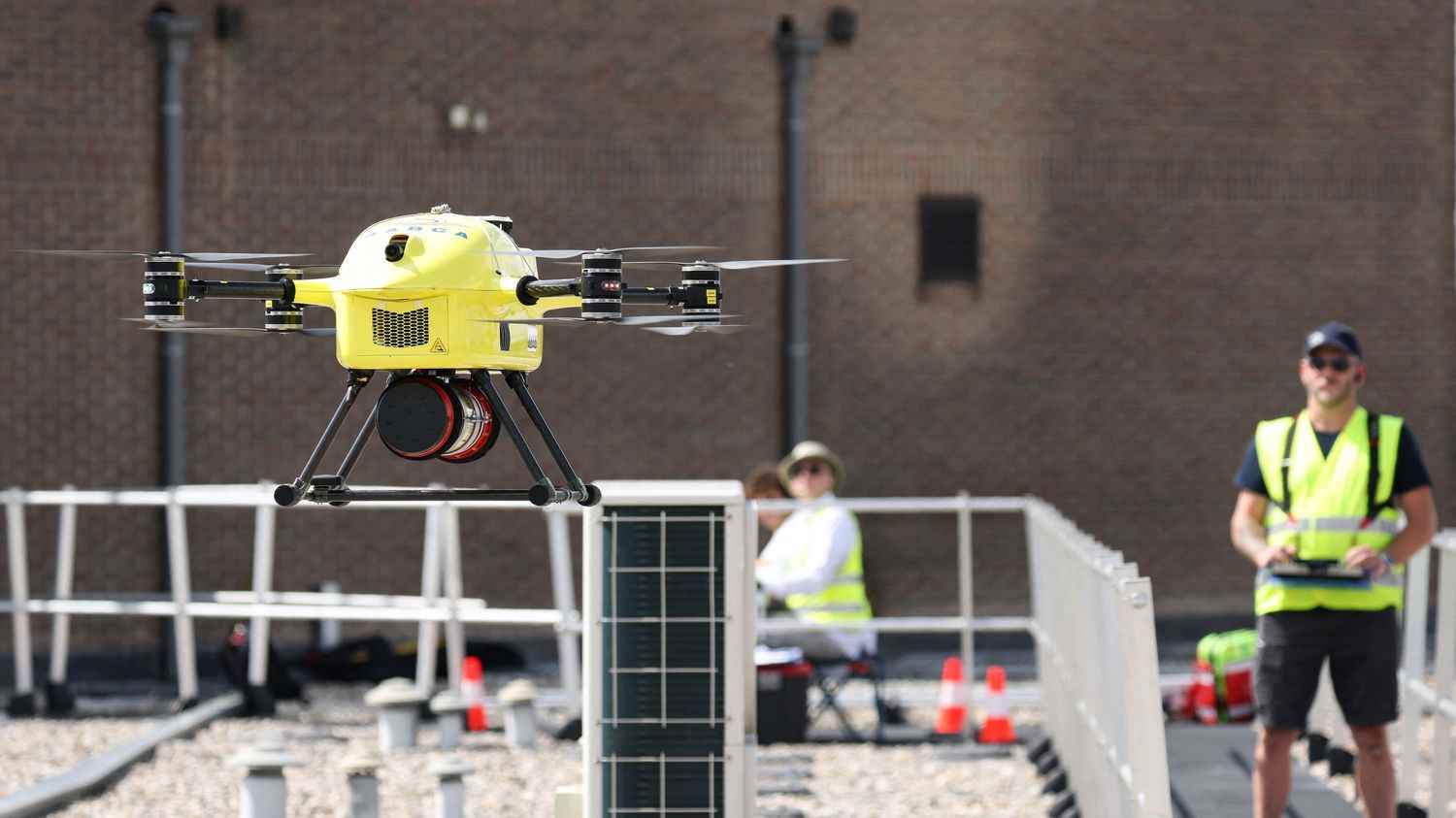The trip was quick: four minutes to cover the 800 meters as the crow flies which separate the two hospitals in Antwerp. Under the drone (and its rather massive bright yellow chassis), an airtight tube and in the tube, a small bottle containing cells, human tissues.
European premiere in Antwerp: a medical transfer carried out by drone https://t.co/TlW4fn5X5g
— Georges-Pierre Tonnelier (@GP_Tonnelier) August 24, 2022
The objective was to transfer them as quickly as possible to the specialized laboratory of Sint-Augustus, to have them analyzed. On August 23 there were a total of four test flights between the Antwerp Hospital Network ZNA and the GZA Ziekenhuizen (which are to merge in 2024 to form a set of 13 sites), a total success for both doctors and the start-up. up Flemish Helicus which seeks to develop this type of transport.
The drone obviously does not experience traffic jams (at least not yet); for hospitals it would go at least twice as fast as a car journey. Els van Doesberg, president of ZNA, explains that “in free-flowing traffic, a car takes 21 minutes to travel the 13 km from ZNA’s Jan Palfijn site to the central laboratory in Middelheim, but it can be much longer in traffic jams on the Antwerp ring road. With the drone, it’s 10 minutes, and it’s stable.”
Each year, the four laboratories in the network which took part in this experiment have to process 1,200 samples, almost always in a hurry. To verify, for example, that he has indeed removed a cancerous tumour, the surgeon takes a little tissue and he must have the answer within thirty minutes maximum to know whether he should continue his operation – and the best indicated laboratory does not is not necessarily on the premises.
“As health system costs rise, expensive medical technical services such as laboratories can be centralized in one place“, allowing neighboring hospitals to send their samples, explains to AFP Mikael Shamim, CEO of Helicus. However, “the great advantage of drones is to combine speed, by reducing the average transport time, and regularity, which guarantees logistical reliability“. The drone is operational 95% of the time. Only very strong gusts of wind and frost can pin it to the ground.
It could not be done before for regulatory issues. Helicus is the only European company to have obtained the authorization to organize flights for medical purposes, above a city (normally it is prohibited, in Belgium as in France) and especially with remotely piloted drones . A first experience took place in 2019, there was no follow-up. But next year a new European text should put some order in this sector, to harmonize the different categories of drones, clarify flight conditions and facilitate medical transport.
About thirty hospitals in Belgium are interested, regular flights could take place from 2024 for all samples intended for analysis (tissues, urine samples or blood samples).
